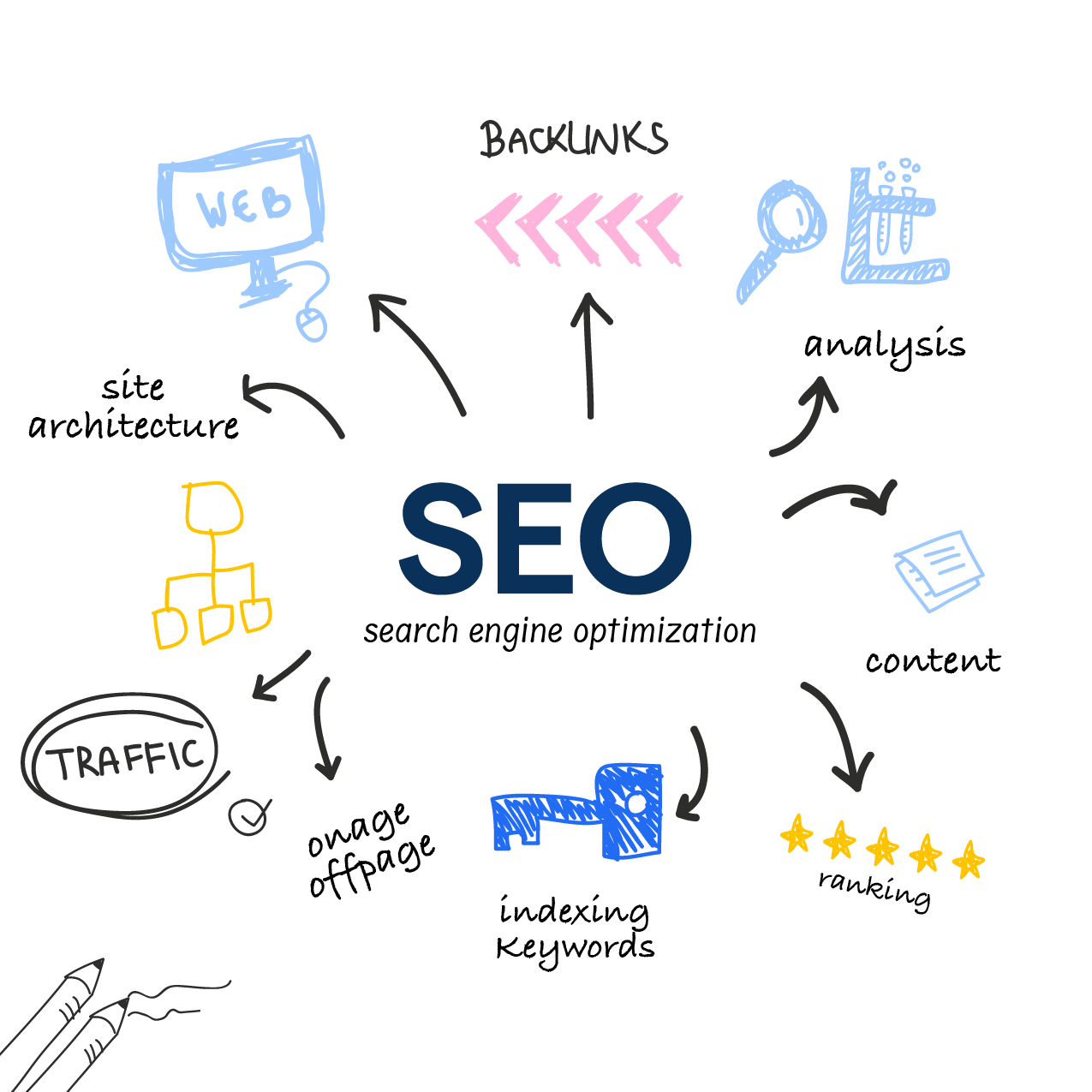Website Speed Optimization Tips: Learn How To Boost Your Site

Welcome to our guide on website speed optimization tips! In this section, we’ll be sharing valuable techniques and strategies for optimizing the speed of your website to ensure faster loading times and an improved user experience. With internet users becoming increasingly impatient, having a slow-loading website can negatively impact your online success and brand reputation. Therefore, it’s crucial to implement best practices for website speed optimization to not only delight your users but also improve your website’s SEO ranking.
Key Takeaways
- Optimizing website speed is crucial for improving user experience and SEO ranking.
- Cleaning up your website’s code and optimizing images can significantly improve website speed.
- Leveraging caching and utilizing content delivery networks (CDNs) can enhance website performance.
- Mobile optimization plays a critical role in website speed optimization.
- Analyzing your website’s current performance is crucial in identifying areas for improvement.
Why Website Speed Optimization Tips Matters
Website speed optimization is crucial to the success of any online business. The longer your website takes to load, the more likely users are to abandon your site and seek out a faster alternative. In fact, research shows that websites with longer loading times have higher bounce rates, lower conversion rates, and decreased user satisfaction.
Search engines also place a strong emphasis on website speed, with Google’s algorithms taking page load time into account when ranking search results. This means that slow-loading websites may rank lower in search engine results pages, resulting in decreased website traffic and potentially lower revenue.
In today’s digital age, users expect instant gratification and instant access to information. A slow-loading site can damage your brand’s reputation and credibility, leading to a decrease in customer trust. Therefore, it’s essential to improve website speed and increase website loading time to enhance user experience and drive better results for your online presence.
Accordingly, here are some statistics to back this up, emphasizing the significance of improving website loading times:
| Statistic | Impact |
|---|---|
| The average user expects a site to load in 2 seconds or less | Users are more likely to abandon a site that takes longer than 3 seconds to load |
| A one-second delay in page response can result in a 7% reduction in conversions | Reduced conversions can negatively impact revenue and business success |
| Google has stated that site speed is a factor in search engine rankings | Websites with slow loading speeds may rank lower in search results, leading to decreased organic traffic |
As you can see, website speed optimization should be a top priority for any website owner looking to improve user experience, increase conversions, and achieve online success.
Analyzing Your Website’s Current Performance
Before speeding up website performance, it’s essential to understand your site’s current performance. Fortunately, there are many tools and techniques available to help you analyze loading speed, identify areas for optimization, and gain valuable insights into specific bottlenecks that may be slowing down your site.
Tools for Website Performance Analysis
One tool for measuring website speed is Google’s PageSpeed Insights. This tool provides a detailed report of your site’s performance, including suggestions for improvement. You can also use Pingdom, GTmetrix, or WebPageTest to analyze your site’s loading speed and identify areas for optimization.
Techniques for Website Performance Optimization
There are many techniques for optimizing website performance to speed up loading times. You can optimize images, enable caching, eliminate unnecessary code, and utilize content delivery networks (CDNs).
Identifying Bottlenecks
To identify specific bottlenecks affecting your site’s performance, you can use Chrome DevTools or Firefox Developer Tools to analyze network activity, identify slow-loading resources, and troubleshoot issues. With these tools, you can gain valuable insights into specific areas that need optimization.
By analyzing your website’s current performance, you can gain valuable insights into what’s slowing it down and develop a plan for improving website performance optimization.
Best Practices for Optimizing Website Speed
Optimizing your website’s speed is essential for enhancing user experience and achieving better search engine rankings. By employing the following best practices, you can significantly improve your site’s performance and boost your website speed.
Code Optimization
Efficient code is crucial for enhancing your website speed. Minimizing HTTP requests, avoiding unnecessary plugins, and compressing your code are some approaches to optimize code performance. By optimizing your code, you can accelerate your site’s response time and improve overall website speed.
Image Compression
Images are valuable assets for web design, but they can also slow down your site’s speed. Compressing your images reduces their size without affecting their visual quality. By utilizing image compression techniques, you can enhance website loading speed, reducing the time it takes for your pages to appear on a user’s screen.
Caching
Caching allows your website to save pages and data, enabling faster loading times for returning visitors. Browser caching, server-side caching, and database caching are some caching techniques that you can implement on your site. By utilizing caching, you can improve website speed, reduce server load, and enhance user experience.
Content Delivery Networks (CDNs)
CDNs leverage multiple geographically dispersed servers to distribute your website’s content to users around the world. By using a CDN, you can significantly enhance website loading speed by minimizing the distance between your users and your site’s data center. This results in faster page load times and a better user experience.
By utilizing these best practices for optimizing website speed, you can enhance your site’s performance, boost website speed, and deliver robust user experiences for your visitors.
Mobile Optimization and Website Speed
With the increasing use of mobile devices, mobile optimization is essential to enhance website loading speed. Mobile users expect a smooth and fast experience; otherwise, they tend to leave the site. To cater to mobile users, we should consider the following tips for optimizing website speed:
- Compress Images: Large images can slow down the site. Use image compression tools to reduce the file size without affecting quality.
- Avoid Redirects: Redirects can create unnecessary requests, leading to slower loading times. Try avoiding redirects to load your site faster on mobile devices.
- Use Responsive Designs: Mobile users access the site from various devices. Responsive designs can adapt to different screen sizes, delivering an optimal user experience across all devices.
- Minimize HTTP Requests: Websites send HTTP requests for every file to the server, causing delays. Reduce the number of HTTP requests to accelerate website speed.
Using these mobile optimization techniques, we can enhance website loading speed and create a faster, more effective mobile experience for users.
Cleaning Up Your Website’s Code
Efficient website code is crucial for optimizing website speed. Bloated or unnecessary code can slow down your site, hindering overall performance. By cleaning up your website’s code, you can eliminate these issues and make sure that your website is optimized for speed.
Techniques for Optimizing Website Code
Here are some techniques for cleaning up your website’s code and improving its performance:
- Eliminate unnecessary scripts: Get rid of any scripts that aren’t essential for your website to function. This will reduce the overall size of your website and improve its load time.
- Minify CSS and JavaScript: Minifying your CSS and JavaScript files removes any unnecessary characters, whitespace, and comments, reducing the file size. This, in turn, makes your website load faster.
- Optimize images: Compress and resize images to reduce file size without sacrificing quality. Large image files can significantly slow down your website, so optimizing them is a must for faster loading times.
Optimizing Code for Speed
When optimizing your website’s code for speed, it’s essential to identify the areas that need improvement. We recommend using auditing tools such as Google’s Lighthouse to gain insights into specific bottlenecks that are slowing down your site. By addressing these issues and implementing the techniques discussed, you can significantly improve your website’s speed and overall performance.
Optimizing Images for Faster Loading
Images are essential to visual web design and can increase user engagement. However, they can also slow down your website’s loading speed, leading to a poor user experience. In this section, we’ll discuss image optimization techniques that you can use to reduce the file size of your images while maintaining their visual quality. By optimizing images, you can improve website loading times, resulting in a seamless user experience.
Compression
Compressing images reduces their file size without altering the visual quality. You can use various compression tools and techniques, such as lossless compression, which reduces the file size without reducing visual quality, and lossy compression, which makes minor image alterations to produce smaller file sizes.
Choosing the right file formats
Selecting the most suitable image file format is essential to maximize website loading speed. For images with transparent backgrounds like logos or icons, use PNG format. For complex images with a lot of details, use JPEG format. For animated images, use GIF format, or consider using a video format instead.
Lazy Loading
Lazy loading technique only loads images when a user scrolls down to view them. By loading images only when a user needs to see them, it can significantly reduce website loading time.
Responsive Images
Responsive design ensures that images fit any screen size, resulting in a better user experience. A responsive image is an image that adjusts to the exact dimensions of the screen it’s being viewed on. By making your images responsive, you can improve the loading time and overall performance of your website.
By following these image optimization techniques, you can decrease your website’s loading time and enhance the user experience. In the next section, we will discuss leveraging caching for improved website performance.
Leveraging Caching for Improved Performance
If you want to reduce your website’s loading time, caching is one technique that can help. Caching involves storing frequently accessed data so that it can be delivered quickly when requested. In this section, we will discuss various caching types, including browser caching, server-side caching, and database caching. Implementing caching mechanisms can optimize the loading time, improve overall performance, and enhance user experience.
Browser Caching
Browser caching stores frequently accessed data on the user’s device, decreasing the number of requests sent to the server each time the user revisits your website. It’s easy to implement and requires HTTP response headers to instruct browsers on what to cache. By adjusting the expiry times and Cache-Control directives, you can determine what content is cached and for how long.
Server-Side Caching
Server-side caching stores content on the server, serving frequently requested data from memory instead of retrieving it from the disk or database. It can minimize server resource usage and reduce overall response time. Popular server-side caching mechanisms include Redis, Memcached, and Varnish. To implement server-side caching, you will need to customize your server configuration or use a hosting service that offers caching support.
Database Caching
Database caching, or query caching, stores the results of frequently requested database queries in memory, avoiding the need to execute the same queries repeatedly and reducing computation time. By using a database management system that provides caching mechanisms, you can achieve faster execution times and improved overall performance. MySQL and PostgreSQL are well-known databases that offer caching features.
Caching is an effective technique to boost website speed. By using browser caching, server-side caching, and database caching, you can improve your site’s performance and user experience. With caching, your website will respond to user requests more quickly, enhancing overall satisfaction.
Utilizing Content Delivery Networks (CDNs)
Want to improve website speed and increase website loading time for users worldwide? Consider leveraging Content Delivery Networks (CDNs) to distribute your website’s content across multiple servers.
CDNs reduce the distance between users and your site’s hosting server, resulting in faster content delivery and optimal website speed for users. With CDNs, your site’s content is stored on servers across the globe, allowing users to access it from a server nearest to their location.
How Do CDNs Work?
When a user visits your website, CDNs help deliver the content to the user’s device by routing the request to the nearest server that stores your website’s files. This reduces the amount of time it takes for the user’s device to download the website’s content.
The use of CDNs can also improve website speed during times of high traffic or server overload. If your website experiences a sudden surge in traffic, CDNs can help handle the extra load by distributing the requests across multiple servers.
How to Implement CDNs
Implementing CDNs can be an effective way to improve website speed, but it’s important to choose the right CDN provider for your needs. Various CDN providers offer different features, including global coverage, security, and performance optimization.
Once you’ve selected a CDN provider, the implementation process involves setting up a subdomain for your website and configuring your website’s DNS records to point to the CDN. Your website’s content is then stored on the CDN’s servers and served to users from the closest server.
Keep in mind that CDNs may come with additional costs, so make sure to weigh the benefits against the expense.
Conclusion
We hope this guide has been useful in helping you understand the importance of website speed optimization and providing you with valuable tips and techniques to improve your site’s performance. By implementing the best practices discussed in this guide, you can significantly enhance your website’s speed, leading to faster loading times and improved user experience.
Remember, website speed optimization is an ongoing process that requires regular monitoring and optimization. We encourage you to continue to analyze your website’s performance, test different strategies, and adjust your approach as needed to achieve optimal results.
Thank you for reading, and we wish you the best of luck in your website speed optimization efforts!
FAQ
Why is website speed optimization important?
Website speed optimization is crucial for several reasons. Firstly, a slow-loading website can lead to a poor user experience, causing visitors to leave your site and potentially impacting your conversion rates. Secondly, search engines, such as Google, consider website speed as a ranking factor, meaning that faster websites are more likely to appear higher in search results. Therefore, optimizing your website’s speed can improve your search engine rankings and increase organic traffic to your site.
How can I analyze my website’s current performance?
There are several tools and techniques available to analyze your website’s current performance. One popular option is to use website speed testing tools like Google PageSpeed Insights or GTmetrix. These tools will provide insights into various performance metrics, such as page load time, server response time, and resource loading, helping you identify areas for improvement. In addition, monitoring user behavior metrics, like bounce rate and average session duration, can also provide valuable insights into your website’s performance.
What are some best practices for optimizing website speed?
There are several best practices you can follow to optimize your website’s speed. These include optimizing your code by removing unnecessary scripts, minifying CSS and JavaScript files, and reducing HTTP requests. You can also enhance website speed by optimizing images through compression, choosing the right file formats, and implementing lazy loading. Leveraging caching mechanisms, both on the browser and server side, can greatly improve your site’s performance. Other techniques, such as utilizing a content delivery network (CDN) and implementing responsive design, can further enhance website loading speed.
How can I optimize my website for mobile devices?
Mobile optimization is essential for providing a seamless user experience on smartphones and tablets. To optimize your website for mobile devices, you can start by using responsive design, which ensures that your site adjusts its layout and content based on the user’s screen size. Additionally, you can optimize mobile-specific elements, such as font sizes and touch targets, and reduce the file size of images and other media. It’s also important to minimize the number of redirects and enable browser caching to improve loading speed on mobile devices.
How can I clean up my website’s code for improved performance?
Cleaning up your website’s code involves removing unnecessary elements, optimizing scripts, and minifying CSS and JavaScript files. By eliminating unused code and reducing file sizes, you can significantly improve loading speed. Additionally, ensuring that your code is properly organized and structured can make it easier for browsers to render your website efficiently. Regular code maintenance and optimization can help maintain a streamlined and fast-loading website.
What are the benefits of leveraging caching for website speed optimization?
Caching can greatly enhance your website’s performance by storing frequently accessed data and serving it quickly when requested. Browser caching allows browsers to store web elements locally, reducing the need to fetch them from the server each time a user visits your site. Server-side caching involves caching data on the server level, ensuring a faster response to user requests. Database caching can improve database-driven websites’ performance by caching query results. By implementing caching mechanisms, you can reduce server load, decrease page load times, and deliver a faster experience to your visitors.
How can utilizing content delivery networks (CDNs) improve website speed?
Content Delivery Networks (CDNs) distribute your website’s content across multiple servers located in different geographic locations. By storing copies of your website’s files on these servers, CDNs reduce the distance between users and your site’s hosting server, resulting in faster content delivery. When a user accesses your site, the CDN serves the requested assets from the server closest to them, reducing latency and improving loading speed. CDNs are particularly effective for global websites, as they ensure a consistent and fast user experience regardless of the visitor’s location.





